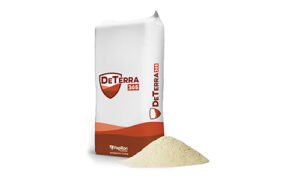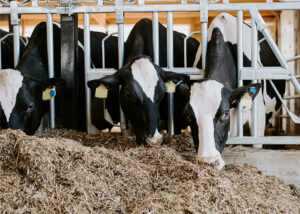Mineral nutrition is vital to maximizing cows’ health and productivity, but often we don’t think much about it. But this “if it’s not broken, don’t fix it” approach can leave money on the table.
Magnesium is one mineral that serves many key functions inside the cow, impacting every major metabolic process. Additionally, magnesium is involved in muscle and nerve function, as well as calcium and phosphorus homeostasis. Even in humans, magnesium is used to help with both migraines and sleep issues due to its widespread impacts on the body.
What the research reveals
In cows, research supports the use of increased levels of magnesium in pre-fresh diets to help cows quickly adapt to the calcium demands of lactation and avoid hypocalcemia and milk fever. Magnesium is also a bit unique because there are very small labile (easily accessible) pools of magnesium in the body, meaning that virtually all of a cow’s daily magnesium requirement must be met through her diet. This makes managing dietary magnesium especially critical for ensuring cow health.
The daily requirements for magnesium mean that providing a dietary magnesium supplement, especially one with high magnesium bioavailability, is key. It is important to note, however, that bioavailability of magnesium is complex and difficult to measure, so most evaluations of magnesium sources rely on simple solubility tests. These cannot be used to directly estimate the bioavailability of different magnesium sources, but they can provide valuable information on if there are potential differences between two sources of the same ingredient.
Magnesium oxide and calcium magnesium carbonates (sometimes referred to as dolomite) are the two most used supplemental magnesium sources. Each magnesium supplement comes with its own distinct advantages and challenges.

Evaluating magnesium oxide
For magnesium oxide, the primary advantage is that it has a very high magnesium concentration, around 54-56%. One of the largest challenges with magnesium oxide is the large differences in bioavailability between sources. MgO is formed by intensely heating magnesite, a mined ore, in a process called calcination. The time and temperature at which the ore is heated, as well as the particle size of the finished product, differs by source and can drastically impact the bioavailability of the finished product.
A recent study out of Belgium evaluating different methods to estimate magnesium oxide solubility confirms this. In the trial, they measured solubility of 16 different magnesium oxide samples from different origins via two different methods, either rumen fluid incubation or acetic acid incubation. In both methods, there was approximately a five-fold difference between the lowest solubility sample and the highest. For example, solubility through the rumen fluid incubation method ranged from 15% to 70%—a huge range that could have an impact on a herd.
Evaluating calcium magnesium carbonate
Calcium magnesium carbonate (CMC) is mined from deposits and then ground and packaged for use in animal feed among other uses. It contains 12% magnesium and 21% calcium, giving it the advantage in also providing supplemental calcium. The solubility and reactivity of CMC is deposit-specific, making research proving the CMC’s efficacy critical.
Take MIN-AD® for example. Papillon Agricultural Company’s supplement was compared in vitro to a commercially available CMC from a different deposit. The results? Only MIN-AD resulted in increased volatile fatty acid production. Additionally, when looking at acid solubility tests for MIN-AD over the course of several years, solubility only differed by 5%, compared to a CMC source from multiple deposits which varied by 35%.






